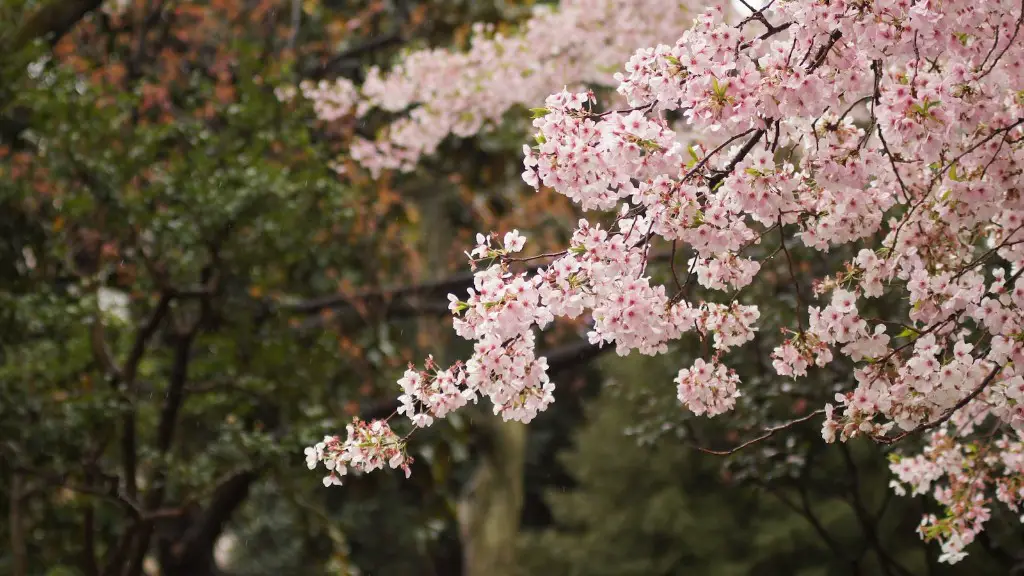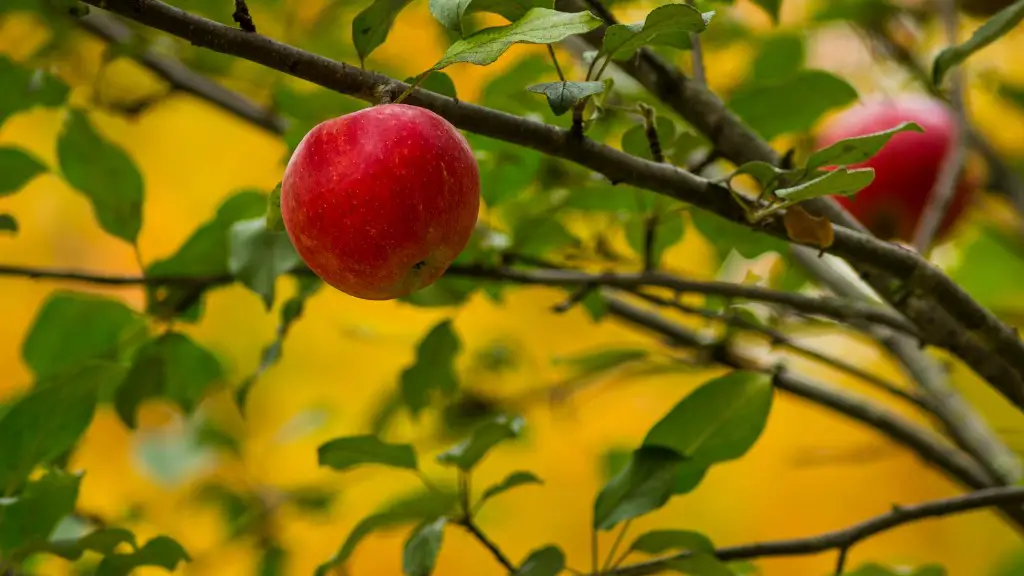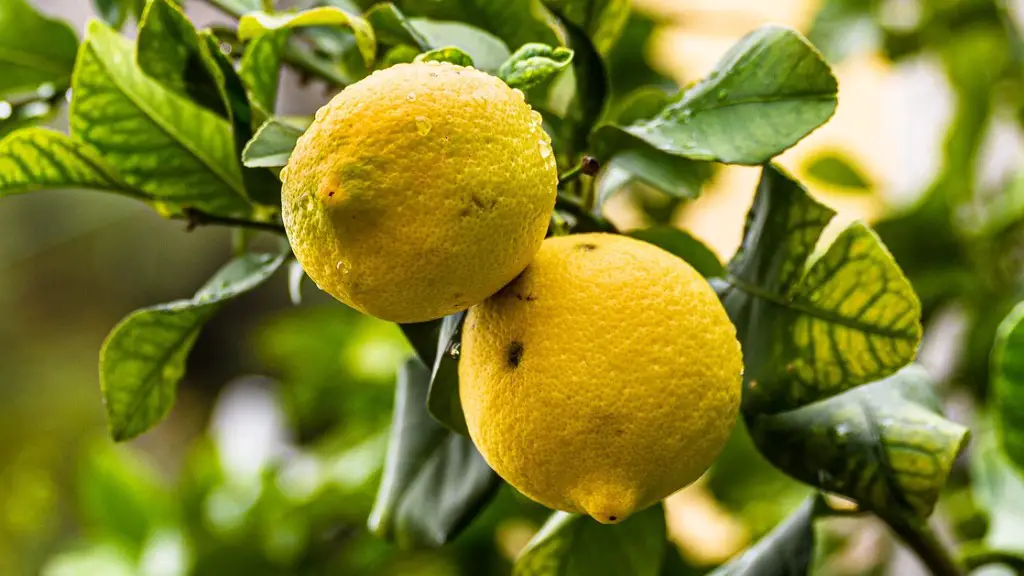Weeping cherry trees offer a splash of colour and beauty in any garden, but be sure to check for any signs of fungus. This type of infection is common in cherry trees and can be managed without putting the tree at risk. Read on for more information about how to treat fungus on weeping cherry trees to keep them healthy and beautiful.
The first step to treating fungus on weeping cherry trees is to identify the cause. Fungal infections can be caused by a variety of factors, from environmental changes to increased humidity levels or overcrowding. Be sure to take a close look at the tree’s foliage and examine any spots or discolouration, which may be indicators of a fungal problem. Talk to local garden experts and tree specialists to gain a better understanding of the problem and to learn about the best ways of treating it.
It’s also important to assess the extent of the fungal problem before proceeding with any treatment. In some cases, pruning infected branches can be enough to address the issue, whereas in more severe cases a fungicide may be needed. There are a range of fungicides available, which can be sprayed directly onto the affected area. It’s essential to follow the instructions on the fungicide label, to ensure that the tree is not over-treated and that you are using the correct product.
Fungal infections can be difficult to eradicate, and it’s important to carry out regular inspections to ensure that all signs of infection have disappeared. Take the case of Apple scab, for example. This can cause damage to the leaves of weeping cherry trees and can be hard to treat. In such cases, regular application of a fungicide, combined with pruning of affected branches, will help to reduce the chance of further infections in the future.
It’s also a good idea to protect the tree from potential fungal problems by taking preventative action. Ensure that the tree is well watered but not waterlogged and that it gets enough sunlight. If a tree is in an untreated area, keep this region free from fallen leaves and debris, which can trap moisture and increase the risk of fungal growth. Finally, make sure to provide a regular mulch layer to keep the soil moist and to encourage healthy root development.
Try Natural Remedies
If you don’t wish to use chemical products to treat fungus on weeping cherry trees, there are some natural remedies that are worth considering. Neem oil, for example, is an effective fungicide and can be sprayed directly onto affected areas to treat fungal infections. Alternatively, you can use a solution of bicarbonate of soda and water, which can help to reduce the risk of fungal growth on the tree.
It’s important to remember that natural remedies may not be as effective as chemical fungicides, and so it’s important to assess the extent of the infection before making a decision. If the infection is severe, a chemical fungicide could be the best option, as this will be more effective at treating the fungus.
Finally, make sure to avoid treating fungus on weeping cherry trees too often. Over-treatment can cause damage to the tree, as fungicides can be toxic in large quantities.
Fertilize the Soil
Ensuring that your weeping cherry tree is planted in healthy soil is an important step in treating fungus. Test the soil regularly – if it is lacking in essential nutrients, add a fertilizer that contains a range of trace elements. Be careful not to over-fertilize, as this can lead to further fungal problems.
Additionally, make sure to provide the tree with adequate drainage, as standing water can lead to the growth of fungus. The roots of the tree need to be able to absorb air and water, so ensure that the soil has the right balance of both. If you are able to, mulch the area around the tree; this will help to keep the soil moist and will also reduce the risk of fungal infections.
Monitor the Tree
Regularly monitoring the condition of the tree is an essential part of treating fungus on weeping cherry trees. Take the time to observe the tree for any signs of discolouration or deformity, as these could be indications of a fungal problem. If you notice any of these, contact a tree specialist or local authorities for assistance.
In addition, keep an eye on the health of the tree in general; check for any cankers or other symptoms of infection. If the tree looks unhealthy, consider treating it with an organic fungicide or organic insecticide, combined with good soil care practices.
Encourage Healthy Growth
Finally, make sure to give your weeping cherry tree the care it needs to grow and thrive. This includes providing the tree with adequate water, sunshine, and a nutrient-rich soil. When pruning branches, take care not to remove too many at once, as this could disrupt the balance of the tree.
By taking the right precautions and following the steps outlined above, you can easily treat fungus on weeping cherry trees and keep your garden looking beautiful and healthy. Just remember to stay vigilant and observe the tree regularly for any signs of further infection.
Check For Pests Regularly
Certain pests, such as aphids and mites, can cause damage to cherry trees and make them more vulnerable to fungal infections. You should therefore make sure to check for any signs of pests regularly and treat them as quickly as possible. Dish soap and water is an effective, natural treatment for aphids, and neem oil can be used to treat mites.
In addition, it’s important to keep the tree free from weeds and debris. Weeds compete with the tree for resources and can provide the ideal environment for pests and fungi to grow and spread. Be sure to keep the area around the tree free from weeds and any other potential sources of infection.
Ensure Proper Pruning
Pruning is a great way to keep your weeping cherry tree looking healthy and beautiful, but it’s important to do it correctly. Prune the tree when it’s dormant, as this will ensure minimal disruption to the tree’s growth. Additionally, make sure to sanitize your tools between uses, as this will reduce the chance of further infections.
Pruning can also be a useful way of managing fungal infections. Prune away any infected branches to reduce the spread of the fungus – it’s important to ensure that the infection does not climb any higher than the branch you have removed. If the tree is severely infected, consider removing the entire tree as a last resort measure.
Use Organic Fungicides When Necessary
In some cases, organic fungicides may be a better option than chemical fungicides. Organic fungicides are often made from natural ingredients and so are less likely to cause damage to the tree than their chemical counterparts. When selecting an organic fungicide to treat fungus on weeping cherry trees, be sure to check the label to ensure that it is safe and suitable for use.
Additionally, it’s important to note that organic fungicides may take longer to take effect than chemical fungicides. Be sure to follow the instructions on the packaging carefully and take the necessary precautions to ensure that the fungus is fully eradicated.
Treating fungus on weeping cherry trees is not always easy, but it is essential for the health of the tree. By following the steps outlined above, you can make sure that your tree remains healthy and beautiful for many years to come.





